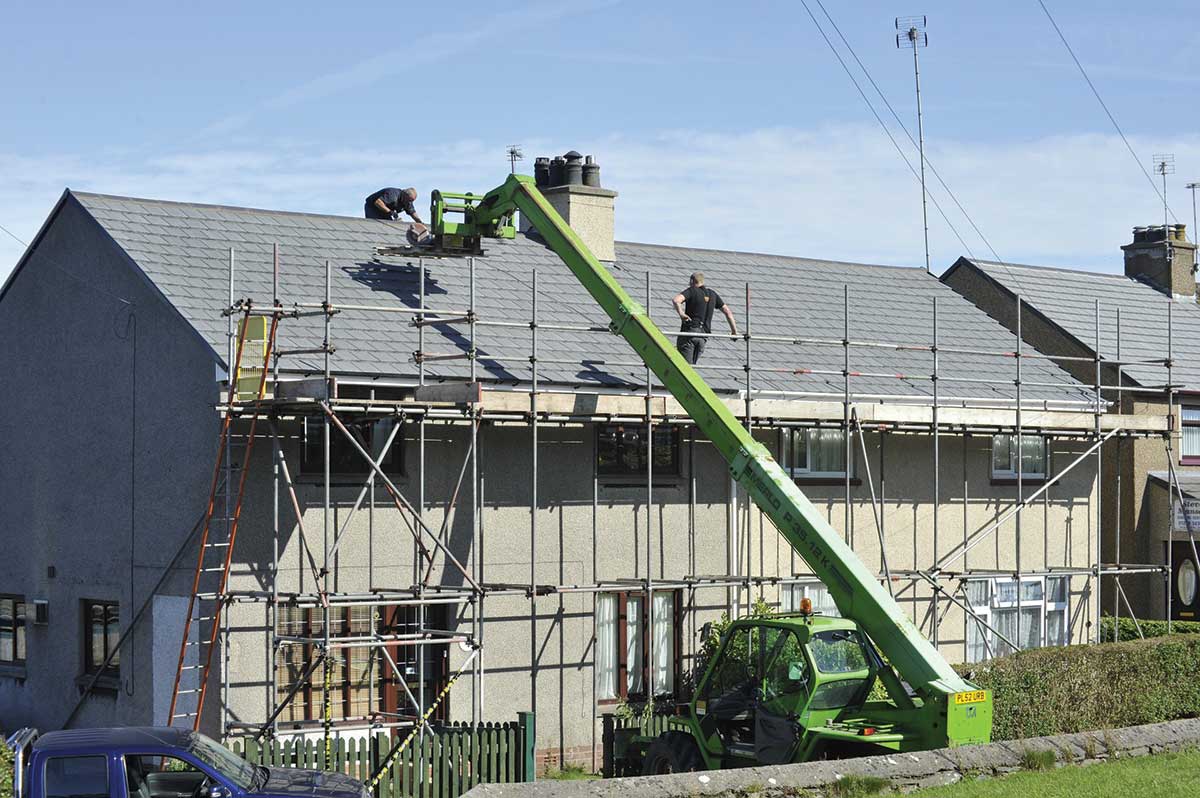How much can you borrow? Do you need insurance? We find out from EBS mortgage master Brian Carey, Self Build Zone’s Kieran Dwyer, AIB Bank’s head of homes for Kildare, Laois and Offaly Alice Hynes and AIB Bank’s head of homes for Cavan, Monaghan and Louth Debbie Clarke.
Do I need a deposit?
A: Brian Carey
If you own the site, this acts as your deposit and lenders can offer up to 100 per cent of the construction costs as long as the value on completion of your home does not exceed 90 per cent for First Time Buyers (FTB) or 80 per cent for all others. This is in line with the Central Bank rules. If you are purchasing the site you can get up to a 90 per cent loan (FTB) / 80 per cent (others) of the total site value plus construction costs.
Is applying for a self-build mortgage any different to buying a house?
A: Alice Hynes
The application is assessed in the very same way but there are some additional steps and information required. For a loan offer to be issued, you will need to show you have secured full and final planning approval (Grant of Permission) and submit detailed costings drawn up by a suitably qualified architectural designer or engineer with professional indemnity insurance.
Be clear whether this is an estimate or an actual contract price. Overruns can occur, it can be for a number of reasons, simply the quote being an estimate and not an actual price, design changes through the build or even bad weather delaying or damaging work. These risks need to be factored in with a contingency.
Make sure you have your research done and know what your outlays are going to be, from professional fees, including your solicitor, to council levies that need to be paid upfront or water connection fees. The loan is then paid out in stages; your design professional must sign off on each of these stages to say they are complying with the building regulations before the stage payment can be issued.
How is the money advanced by the lender?
A: Brian Carey
One of the major differences between a standard mortgage and a self-build mortgage is the way the money is released. With a standard mortgage, the funds are released in one go, whereas with a selfbuild mortgage the capital is released in stages throughout the construction of your house. You only make repayments on the amount you draw down at each stage. You may also have the option of interest only repayments for the first 12 months of the build.
How is the site insured during construction?
A: Brian Carey
You may receive free ‘course of construction insurance’ from your lender for the first 12 months while you are building your property, but check for this as not all banks offer it. This will cover your property for fire, flood and storm damage during construction. There are specialist insurance providers who can supply further coverage, e.g. against theft.
A: Kieran Dwyer
Ideally you should take out your insurance policy before work starts however it’s possible to arrange cover any time from breaking ground up to close to completion. In the case of an extension or renovation your existing house policy will likely have certain exclusions but will definitely reduce cover to fire, lightning and explosion if the house is unoccupied for 30 to 45 days. It will also exclude liability cover for injuries to third parties (members of the public or builders) arising out of construction work.
Your ‘bona fide’ subcontractors who bring materials on site such as the plumber and electrician must have their own insurance. All other tradesmen, labourers, casual labour, etc. are not required to have insurance. Your architectural designer and/or engineer should have professional indemnity insurance for failures due to the design of the house or extension (see warranties).
What costs are involved?
A: Brian Carey
Managing the cost of building your home is like managing a small business. Your build costs are influenced by the size, level of specification, number of storeys, and the extent to which you will be personally involved. It depends on the lender but you can get a loan for the build cost, solicitors fees, engineer / architect fees as well as council and connection fees which can be high depending on where you’re building.
The bank won’t normally charge you arrangement or consultation fees but might charge the valuation fee at the end to determine how much the house is worth (€150).
Would I qualify for a tax break?
A: Brian Carey
The Help to Buy incentive helps first time buyers who are buying or building their own home to pay their mortgage deposit by giving them a 5 per cent tax rebate based on the value of their house. Self-builds qualify for the Help to Buy scheme as long as they meet all the conditions. So first time buyers building a new house with a mortgage that’s a minimum of 70 per cent of the house valuation can qualify. The first step is to apply for the tax rebate on revenue.ie to establish your maximum relief.
What are the main self-build pitfalls?
A: Debbie Clarke
Time is a factor – consider how long it can take to get planning permission and that it can take longer to build than you estimated. In that case your living costs may increase if you are renting. Understand the difference between going the direct labour route versus a fixed price contract and the pros and cons of each. It’s more costly to go with a contractor but it’ll be project managed for you and more likely to be delivered on time. If you go direct labour you will need the help of a qualified architectural designer or engineer to guide you.
Managing the budget, keeping receipts and reconciling the spend along the way is vital as is getting the right insurance to protect your construction at the very start, as some providers may not quote when the build is underway. Having the right team is everything; do your research and get recommendations from family and friends for your solicitor, engineer, architectural designer, builder and any tradesmen you might need.
Warranties: What are they about?
A: Kieran Dwyer
Even if your architectural designer has professional indemnity insurance, I’d advise anyone building or extending to take a 10 year structural warranty cover. It’s the same principle as taking out a warranty on an appliance; the 10 year timeframe is common because that is when any defects in construction are likely to become apparent.
Your current house insurance policy is likely to cover a defined number of risks such as fire, storm and escape of water. However a structural warranty policy will cover any defect, fault or failure in design, workmanship, materials or components of the structure causing destruction of, or physical damage, to the house.
The warranty includes periodic site visits; surveyors carry out four to six inspections during the construction stage. The first of these will be when the foundations are being poured. Consider taking out the warranty before work starts. If works have already started and you decide to sign up midway, the surveyors will have to carry out a far more detailed survey which will result in a higher overall cost.
[powerkit_collapsibles]
[powerkit_collapsible title=”ELEMENTS” opened=”true”]
Standard build costs by region for masonry cavity wall, 200sqm two storey/dormer new build
Dublin region – € 280,200
Cork/Kerry – € 228,600
Cavan/Donegal/Leitrim/Louth/Monaghan/Sligo – € 222,450
Galway/Limerick/Clare/Mayo – € 221,550
Westmeath/Laois/Offaly/Longford – € 221,100
Carlow/Kilkenny/Tipp/Waterford/Wexford – € 215,700
Kildare/Meath/Wicklow – € 185,700
**Indicative costs only, always consult with a building professional to determine your budget as each project will vary
significantly in cost, including variances due to exact location
Source: Build Cost Calculator on selfbuild.ie/calc
[/powerkit_collapsible]
[/powerkit_collapsibles]







